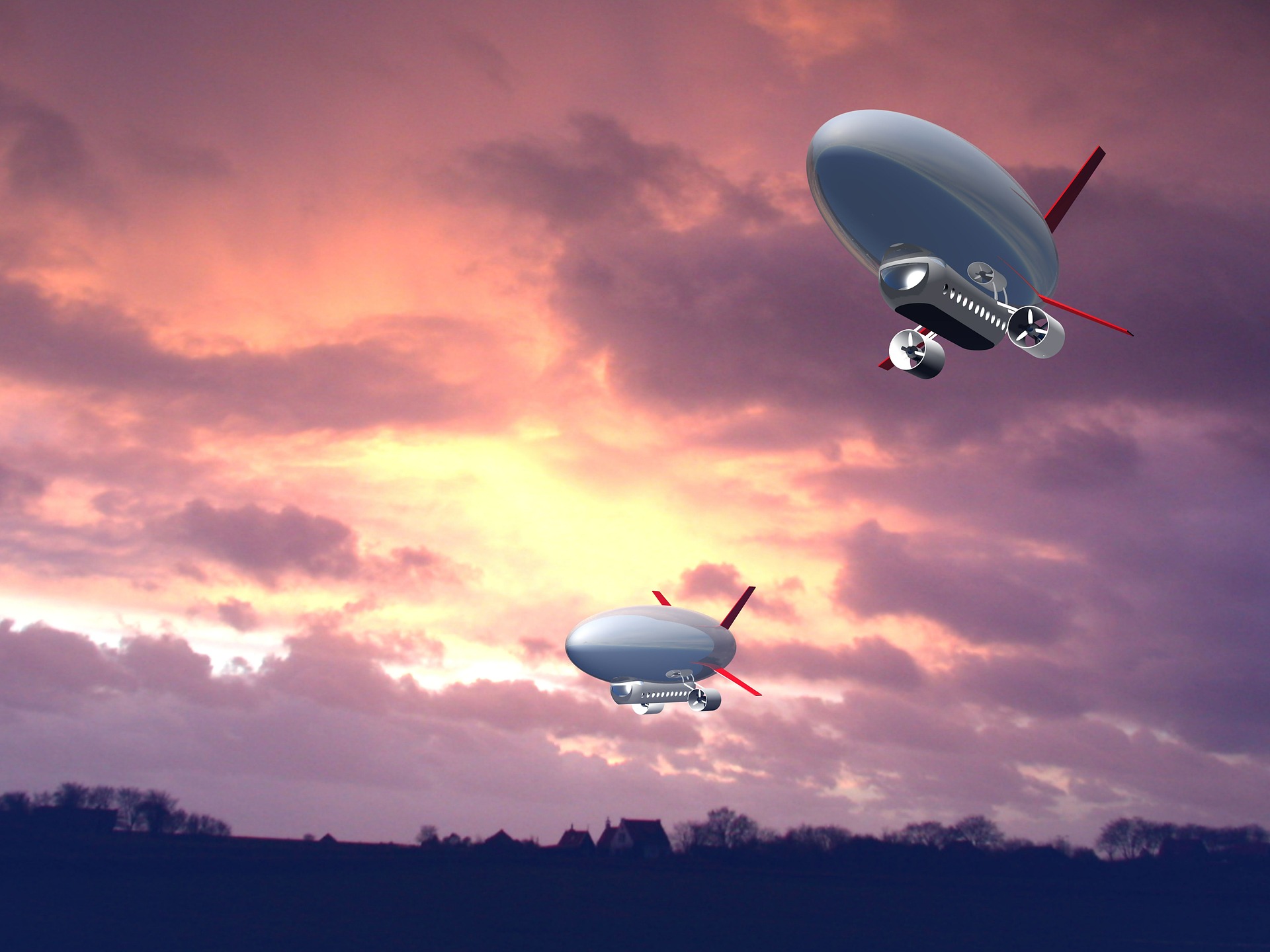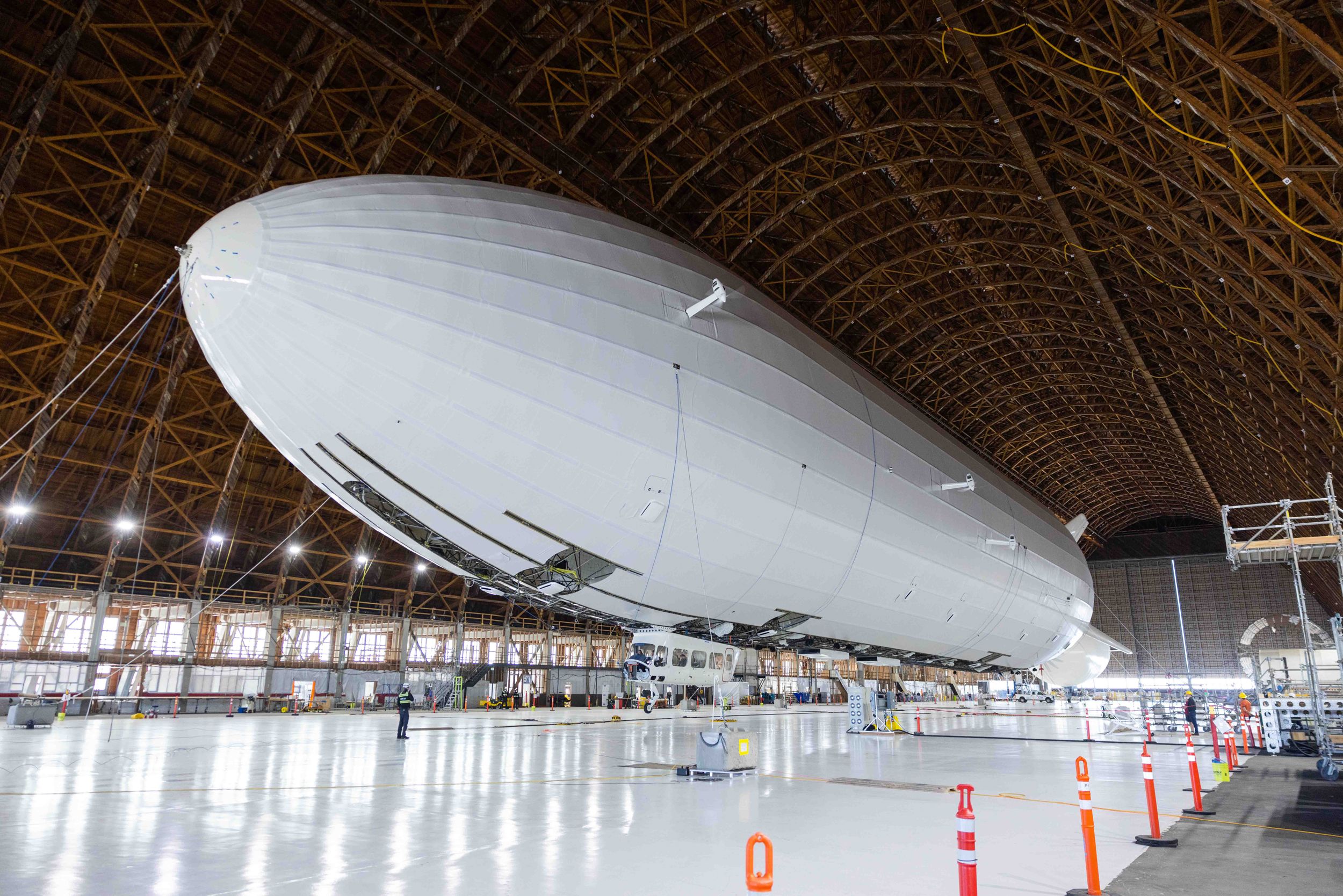Alright folks, let’s dive straight into it. Ever wondered how many blimps are there floating around in the sky? If you’re anything like me, you’ve probably gazed up at one of these majestic floating giants and thought, "What’s the deal with these things?" Well, today we’re gonna answer that question and more. We’ll explore the world of blimps, their history, uses, and everything in between.
Blimps, those giant inflatable flying machines, have always captured our imagination. They’re like the gentle giants of the sky, cruising along at their own leisurely pace. But have you ever stopped to think about how many blimps are actually out there? It’s not as straightforward as you might think. Let’s unravel the mystery together.
Before we dive deep into the numbers, it’s important to understand what blimps are and why they’re so special. These airships have been around for over a century, serving various purposes from military surveillance to advertising and even tourism. So, without further ado, let’s get started and find out just how many blimps are there in the world today.
Read also:Jonathan And Drew Scott Celebrate Their 41st Birthdays In Style
What Exactly is a Blimp?
Let’s start with the basics. A blimp is a type of airship that doesn’t have any internal framework to maintain its shape. Instead, it relies on the pressure of the gas inside its envelope to keep it aloft. Unlike zeppelins, which have rigid structures, blimps are more flexible and easier to maneuver. They’re essentially giant balloons with engines and steering mechanisms.
Now, you might be wondering why blimps are still around in this age of advanced aviation. Well, they’re actually pretty useful for a variety of tasks. From aerial advertising to scientific research, blimps offer a unique set of advantages that other aircraft simply can’t match. Plus, let’s be honest, they’re just plain cool to look at.
How Many Blimps Are There Globally?
Alright, here’s the big question. How many blimps are there in the world? The exact number can vary depending on who you ask, but estimates suggest there are around 30-40 blimps currently in operation globally. That’s right, folks, there aren’t as many as you might think. Most of these are used for commercial purposes, like advertising and tourism, while a few are still employed by military and research organizations.
Of course, the number of blimps in operation can fluctuate over time. Some are decommissioned, while new ones are built to replace them. It’s a relatively small industry, but one that continues to thrive in its own niche market.
History of Blimps: From War to Advertising
Let’s take a quick trip down memory lane and explore the history of blimps. These airships have been around since the early 20th century, initially developed for military use during World War I. Back then, they were used primarily for reconnaissance and anti-submarine warfare. They proved to be incredibly effective, providing a bird’s-eye view of the battlefield.
After the war, blimps found new roles in the civilian world. They became popular for advertising, with companies using them to promote their brands from the skies. You’ve probably seen them at sporting events or music festivals, floating lazily above the crowds. Today, blimps are still used for advertising, but they’ve also found new applications in fields like environmental research and border surveillance.
Read also:Prince Harry And Meghan Markle Keep Royal Baby Arrival Private
Fun Facts About Blimps
Here are a few fun facts about blimps that you might not know:
- Blimps can stay airborne for up to 12 hours at a time.
- They typically fly at speeds of around 30-50 mph.
- The largest blimp ever built was the US Navy’s ZPG-3W, which measured over 400 feet in length.
- Blimps are filled with helium, not hydrogen, making them much safer to operate.
Types of Blimps: Not All Are Created Equal
Not all blimps are the same, folks. There are actually several different types of blimps, each designed for specific purposes. Let’s take a look at some of the most common types:
Non-Rigid Blimps
These are the classic blimps that most people think of when they hear the word. They have no internal framework and rely entirely on the pressure of the gas inside to maintain their shape. They’re versatile and relatively easy to operate, making them popular for advertising and tourism.
Semi-Rigid Blimps
Semi-rigid blimps have a partial internal framework, usually consisting of a keel or spine. This gives them a bit more structural integrity than non-rigid blimps, making them suitable for heavier payloads and longer flights. They’re often used for scientific research and military applications.
Uses of Blimps: Beyond the Sky
Blimps might seem like a relic of the past, but they’re still incredibly useful today. Here are some of the main ways blimps are used:
Aerial Advertising
This is probably the most well-known use of blimps. Companies use them to promote their brands at events, sports games, and other large gatherings. The Goodyear Blimp is perhaps the most famous example, having been a staple of American skies for decades.
Military and Surveillance
Blimps are still used by military organizations for surveillance and reconnaissance. They can stay airborne for long periods and provide a stable platform for cameras and sensors. In fact, the US military has experimented with using blimps for missile defense systems.
Environmental Research
Blimps are also used for environmental research, particularly in remote or hard-to-reach areas. They can carry scientific instruments and collect data without disturbing the environment below. This makes them ideal for studying things like wildlife populations and climate change.
The Future of Blimps: What’s Next?
So, what does the future hold for blimps? While they might not be as common as airplanes or drones, blimps are still evolving and finding new applications. Advances in technology are making them more efficient and capable, opening up new possibilities for their use.
One exciting development is the emergence of hybrid airships, which combine elements of blimps and airplanes. These vehicles promise to revolutionize air transport, offering a more fuel-efficient and environmentally friendly alternative to traditional aircraft. Only time will tell if they catch on, but it’s certainly an intriguing possibility.
Challenges Facing the Blimp Industry
Despite their many advantages, blimps do face some challenges. One of the biggest is cost. Building and maintaining a blimp is expensive, which limits their widespread adoption. Additionally, they’re not as fast or versatile as airplanes, making them less suitable for certain applications.
Another challenge is public perception. While blimps are generally considered safe, there’s still a lingering fear of airship disasters, like the infamous Hindenburg crash. This can make it harder for companies to invest in blimp technology.
How Many Blimps Are There in the US?
Now let’s zoom in on the US. How many blimps are there in the country that pioneered their use? As of the latest estimates, there are around 15-20 blimps in operation in the US. Most of these are used for advertising, with a few serving military and research purposes. The Goodyear Blimp remains one of the most iconic examples, having been a fixture of American skies since the 1920s.
Where Can You See Blimps in the US?
If you’re keen to catch a glimpse of a blimp, there are a few places in the US where you’re likely to spot one. Sporting events, especially football games, are a great place to look. The Goodyear Blimp often makes appearances at major games, providing aerial coverage and promotional opportunities. You might also see blimps at music festivals, air shows, and other large events.
Conclusion: The Blimp Legacy
So, there you have it, folks. We’ve explored the world of blimps, from their history to their current uses and future prospects. While the exact number of blimps in operation may vary, one thing is certain – they continue to capture our imaginations and serve important roles in various industries.
If you’ve enjoyed this article, why not share it with your friends and family? And if you have any questions or comments, feel free to drop them below. Who knows, maybe you’ll inspire the next generation of blimp enthusiasts!
Table of Contents
How Many Blimps Are There? Unveiling the Fascinating World of Blimps
How Many Blimps Are There Globally?
History of Blimps: From War to Advertising
Types of Blimps: Not All Are Created Equal
Uses of Blimps: Beyond the Sky
The Future of Blimps: What’s Next?
Challenges Facing the Blimp Industry


